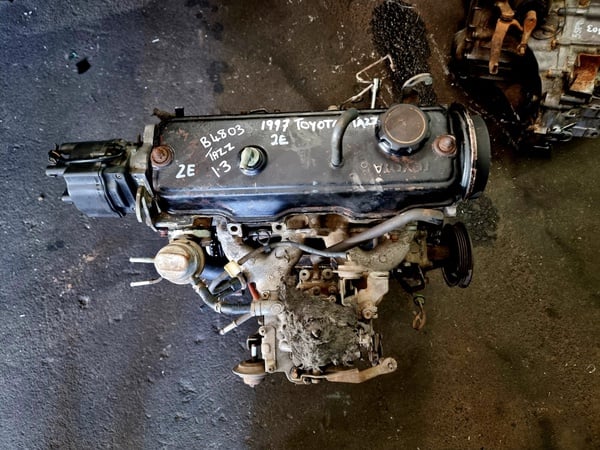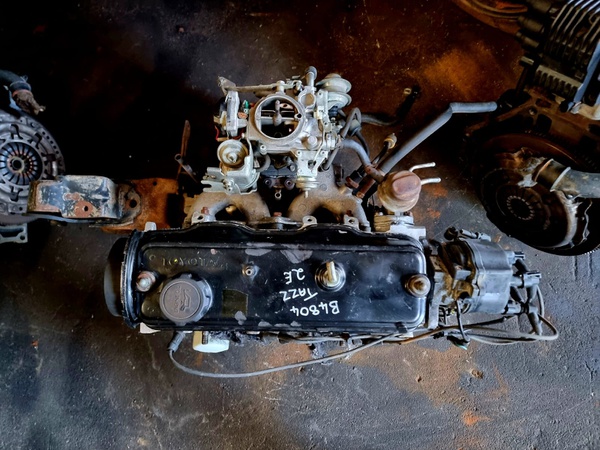How the Toyota Tazz Became a Staple in the Compact Car Market
How the Toyota Tazz Became a Staple in the Compact Car Market
Blog Article
Discover the Most Current Patterns in Engine Modern Technology Via Tazz
In the swiftly developing landscape of vehicle modern technology, Tazz stands at the forefront, highlighting significant advancements in engine systems that focus on both technology and sustainability. From hybrid engines that maximize gas efficiency to the emergence of hydrogen fuel cells, the patterns shaping modern-day powertrains are not just enhancing performance however likewise resolving important ecological challenges.
Crossbreed Engine Innovations
Hybrid engine technologies represent a critical change in vehicle modern technology, incorporating the advantages of interior burning engines with electrical propulsion systems. This integration not only improves gas performance yet also reduces discharges, conference increasingly rigid environmental laws. By making use of both energy resources, hybrid engines can optimize performance, providing power when needed while preserving gas during less requiring motoring conditions.
Recent improvements in hybrid modern technology include renovations in battery effectiveness and regenerative braking systems. These innovations permit better power recovery during deceleration, which can be rerouted to help in velocity or power accessory systems. Manufacturers are concentrating on portable styles and lightweight materials to maximize the efficiency of crossbreed powertrains.
The development of plug-in crossbreeds has actually likewise broadened the market, enabling drivers to bill their lorries making use of common electric outlets. This attribute often permits for substantial all-electric array, more reducing dependence on typical gas. tazz. As the vehicle market remains to evolve, hybrid engine modern technologies are anticipated to play an important role in linking the space in between standard lorries and completely electrical versions, giving a transitional option that satisfies varied customer needs and preferences
Breakthroughs in Electric Powertrains
The auto landscape is quickly developing, with electric powertrains becoming a leading pressure in sustainable transportation. Advances in electrical lorry (EV) technology are dramatically enhancing efficiency, individual, and performance experience. Trick technologies include improvements in battery chemistry, which have actually raised power density, lowered charging times, and expanded general battery life.
Solid-state batteries, for example, guarantee to reinvent the market by giving greater security and effectiveness compared to traditional lithium-ion cells. Developments in regenerative braking systems are making it possible for automobiles to recover power throughout deceleration, adding to general efficiency.
Along with battery modern technology, electrical motor designs are becoming much more advanced. Innovations such as incorporated motors and progressed thermal management systems are assisting to enhance power shipment and lower weight, inevitably improving lorry characteristics.

Jointly, these advancements emphasize the dedication to change towards cleaner, much more effective transport remedies, positioning electric powertrains at the forefront of auto advancement.
The Surge of Hydrogen Gas Cells
Progressively, hydrogen fuel cells are gaining grip address as a viable option to conventional interior burning engines and battery electric lorries. This technology takes advantage of the chemical power stored in hydrogen, transforming it right into electrical power with an electrochemical response with oxygen. The main byproduct of this procedure is water, making hydrogen gas cells an eco pleasant choice with no exhausts at the tailpipe.

Car manufacturers are increasingly purchasing hydrogen gas cell modern technology, recognizing its capacity for long-range applications and rapid refueling capacities that rival standard gas. Furthermore, industries such as heavy-duty transportation and public transit are specifically well-suited for hydrogen gas cells, where battery electrical services may fall short as a result of weight and variety constraints.
As study and investment remain to broaden, hydrogen gas cells are poised to play a significant function in the future landscape of clean transportation and energy solutions.
Enhancements in Internal Burning Engines
Developments in internal combustion engine (ICE) innovation are transforming conventional lorries to fulfill contemporary ecological standards and efficiency expectations. Straight fuel shot, for instance, enables for much better atomization of fuel, leading to even more complete combustion and improved power outcome.
In addition, turbocharging has actually acquired prominence, enabling smaller sized engines to supply greater efficiency without the weight of bigger engines - tazz. This innovation not only improves efficiency yet also adds to decrease fuel intake. Variable valve timing systems are additionally being improved, enabling engines to adjust to numerous driving conditions for boosted torque and responsiveness
Moreover, using light-weight products in engine building and construction is coming to more information be typical, more improving gas efficiency by decreasing total vehicle weight. Engine control devices (ECUs) are progressively sophisticated, making it possible for real-time changes that optimize performance and discharges.
These improvements jointly symbolize a pivotal shift in ICE innovation, straightening with global sustainability goals while still providing the efficiency vehicle drivers get out of their vehicles. As the market evolves, these improvements continue to shape the future of typical automotive design.
Future Patterns in Engine Performance
Significant advancements in engine efficiency are anticipated as makers concentrate on incorporating sophisticated innovations to satisfy strict environmental laws and customer needs. The change towards electrification, hybrid systems, and alternative gas is reshaping the automobile landscape, driving developments that enhance gas economy and lower discharges.
Among the crucial fads is the execution of innovative products and manufacturing methods. Light-weight compounds and high-strength alloys add to decreased vehicle weight, thus enhancing overall efficiency. Furthermore, the fostering of turbocharging and variable valve timing innovations allows for boosted power output from smaller sized engines, additionally boosting fuel economic situation.

Conclusion
Technologies in crossbreed engine systems, electric powertrains, and hydrogen fuel cells demonstrate a dedication to decreasing exhausts while boosting performance. Renovations in interior burning engines and an emphasis on light-weight materials contribute to overall engine performance.
From crossbreed engines that enhance fuel efficiency to the emergence of hydrogen gas cells, the patterns shaping modern-day powertrains are not only enhancing performance but likewise addressing critical ecological obstacles.Hybrid engine developments represent a pivotal change in vehicle innovation, combining the advantages of inner combustion engines with electric propulsion systems.Furthermore, turbocharging has obtained importance, allowing smaller sized engines to deliver greater efficiency without the weight of larger engines. In addition, the fostering of turbocharging and variable valve timing innovations allows for enhanced power output from smaller engines, even more boosting fuel economic climate.
Renovations in interior combustion engines and a focus on light-weight materials add to total engine effectiveness.
Report this page